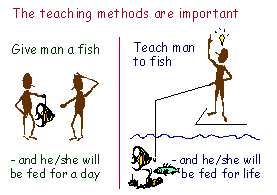Overview of Pronunciation in Language Learning.
“To be able to speak and listen in a second language, it is clear that language learners need something other than just phonemic correctness. As or more important seems to be the ability to comprehend and produce in a near-native-like fashion aspects of pronunciation such as stress, intonation, rhythm, and pacing, and to use gestures and body language appropriately; in other words, to have both linguistic and sociolinguistic competence” (Celce-Murcia, Brinton, & Goodwin, 1996; Florez, 1999). Most language learners feel that pronunciation is a crucial part of language learning. So, they believe the best way to improve their pronunciation is to practice, and many pronunciation experts agree that pronunciation teaching and learning must be situated in communicative contexts. Otlowski and Fraser (1999) concur with much of the current research that the goals of pronunciation teaching should be "developing functional intelligibility, communicability, increased self-confidence, the development of speech monitoring abilities and speech modification strategies for use beyond the classroom"
In order to reach these goals, some authors pay more emphasis on individual learners' needs, supporting a learner-centered approach that involves authentic tasks and the use of peers and groups for interaction and feedback to help learners be critical listeners and develop the ability to notice and repair their own and others' errors. In this model, the role of the teacher is facilitator rather than error corrector or ultimate speech model, it means that the teacher can offer various models, provide opportunities for practice, suggest specific techniques, and give encouragement and advice to learners as they work toward intelligibility.
Morley (1991) calls this role the "speech coach." Fraser (2000) calls for "high quality, effective materials, especially computer-based materials with audio demonstrations, for learners of ESL pronunciation" (p. 2). Such materials, according to Chun (1998), would have to "present authentic speech samples within their cultural contexts and call learners' attention" (p. 73) to specific features. She also suggests that the software must support pair interaction and emphasize natural discourse. It is supposed that the goal of the software is to improve clarity and accuracy of spoken communication and to help students develop effective communication skills. Connected Speech claims to do so by helping learners to identify suprasegmental features of spoken English, to reproduce them, and to be able to evaluate whether they did it well. The software covers pause groups, pitch change, word and syllable stress, and linked words, and also has exercises in minimal pairs and syllable recognition
In order to evaluate pronunciation software, we need to assess how well it teaches, or helps us to teach, in ways that will help students improve their pronunciation. There are some criteria that we have to keep in mind, but it does not imply that the software must meet all of these conditions.
1. Present Authentic Speech Samples and Natural Discourse.
The different versions (North American, Australian, and British English) and the inclusion of a variety of speakers in CS clearly demonstrate to learners that "English" is many different things.
2. Focus Learners' Attention on Both Segmental and Suprasegmental Features.
This is a real strength of CS. Learners can listen, produce, and learn about these features through a large number of exercises on any of three levels.
3. Support Social Interaction and Communication.
While the ultimate goal of CS is to improve students' oral communication, there are no opportunities within the software itself for authentic communication and no real examples of such.
4. Focus on Intelligibility.
According to Darhower (2002), the speech recognition does not always work, and when it does it does not always work well. In addition, whether the computer can recognize an utterance may not have any relation to whether the same utterance can be recognized by other speakers.
5. Support the Development of Metacognition and Critical Listening.
According to pronunciation research, this happens through real communication, which is not possible with CS.
6. Provide Opportunities for Practice.
CS does provide many opportunities for practice with both segmental and suprasegmental features. This practice is within the context of the audio clips, but because of the limitations of the technology, it is typically drill-based.
7. Provide Scaffolding and Individualized Feedback.
Help is presented in the form of both oral and written instructions.
::::::::::::::::::::::::::::::::::::::::::::::::::::::::::::::::::::::::::::::::::::::::::::::::::::::::::::::::::::::::::::::::::::::::
Personal Comment.
From my point of view, this article has attempted to show how students can improve their speaking and listening performance through a software called "Connected Speech" in wich students can listen to native speakers' voice recorded and then repeat the patrons of the speech. However, the author says that language learners need something other than just phonemic correctness. (stress, intonation, rhythm, and pacing, and to use gestures and body language appropriately are needed). Some learners think that pronunciation is a crucial part of language learning so, as they need to produce a cohesive and coherent discourse in order to understand and be understood, they claim that the best way to improve their pronunciation is through practice. I think that this software is so beneficial for those teachers who are not educated in pronunciation or not confident about their own because it provides support and help. Nevertheless, for those learners who do not learn well through drill and repetition this software will not be useful and thet might be bored quickly.



















